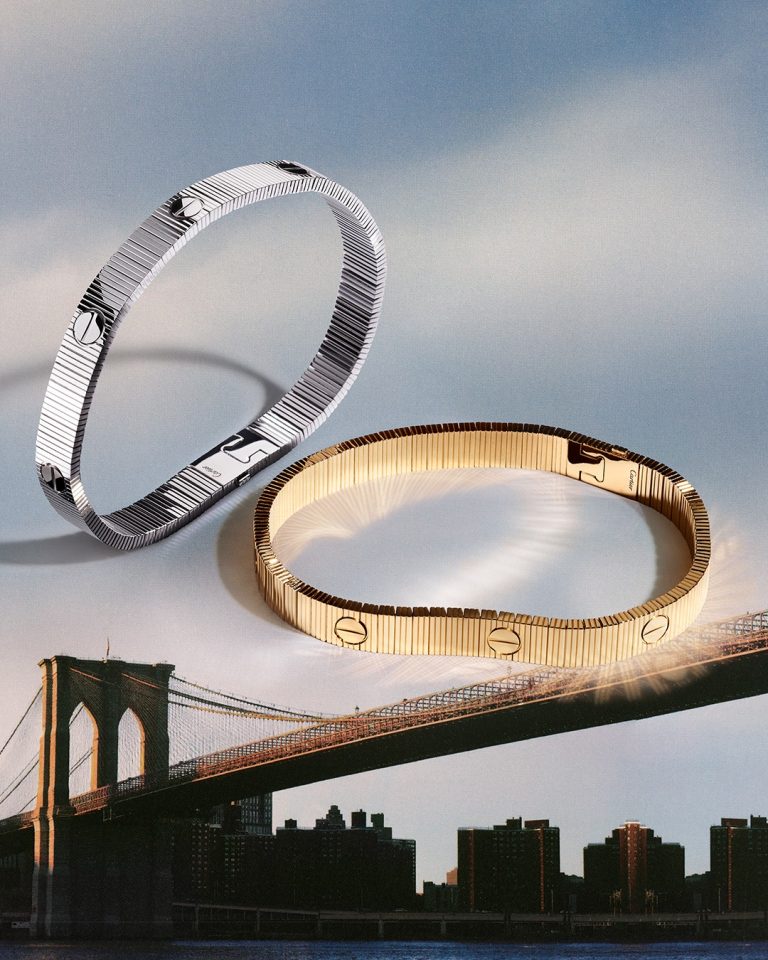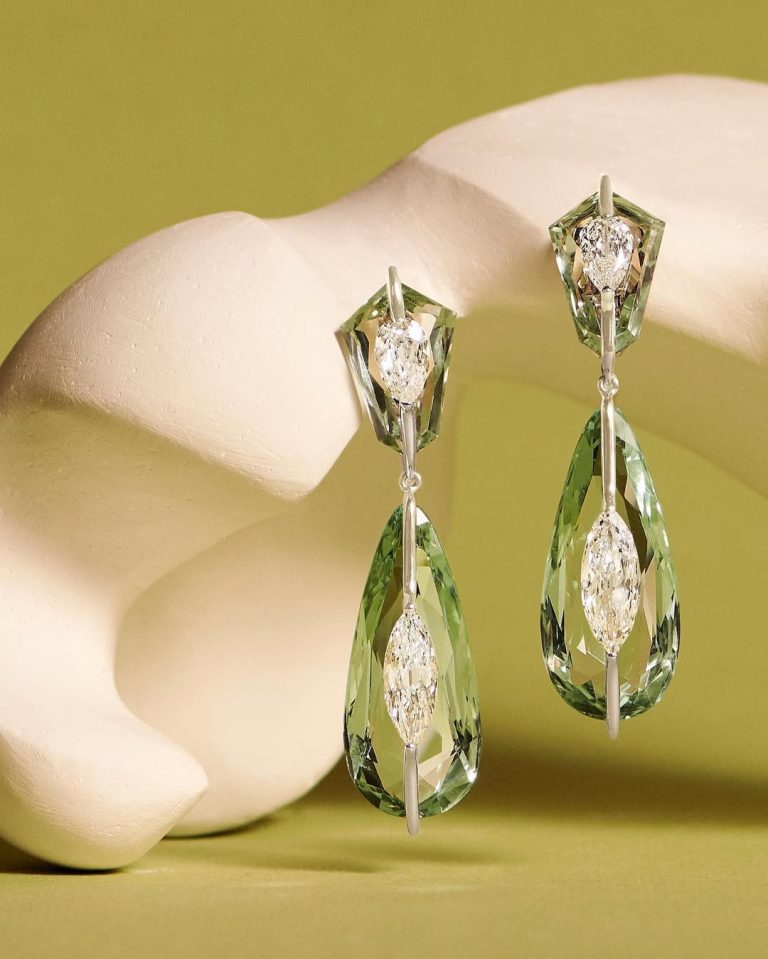When I first heard about Van Cleef & Arpels’ Invisible Setting—also known as the Mystery Set—I imagined it must involve some sort of mystical effect. Don’t laugh! I mean, how else could gemstones appear to float seamlessly, radiating brilliance without any visible metal to distract the eye? As I delved deeper into its history and craftsmanship, I realized this wasn’t magic but sheer genius combined with extraordinary artistry. The technique is a testament to the maison’s unparalleled skill and creativity.
The Birth of an Iconic Innovation
This groundbreaking technique, patented by Van Cleef & Arpels in 1933, revolutionized jewelry design. At its core lies a deceptively simple idea: a hidden grid of gold rails, into which gemstones—rubies, sapphires, emeralds, and diamonds—are meticulously slotted. Each stone is cut with unparalleled precision, completely concealing the underlying structure and creating a smooth, velvety surface that shimmers with uninterrupted color.
Imagine a painstaking process where every gemstone is grooved to fit perfectly onto the invisible gold framework. This meticulous craftsmanship demands extraordinary skill and an unwavering eye for detail. It’s no exaggeration to say that this setting redefines perfection, blending artistry and engineering in a way that continues to captivate the world.

Unveiling the Mystery
Crafting a piece with the Mystery Setting is no ordinary feat. It can take up to eight hours just to cut a single stone. By the time a jewel—such as a delicate clip or brooch—is completed, it may have required around 300 hours of work by master artisans. The complexity of this process means that only a handful of jewelers and lapidaries in the world have mastered it.
The first pieces featuring the Invisible Setting debuted at the 1937 International Exhibition of Art and Technology in Modern Life in Paris. Imagine the world’s reaction to this “mystical art.” Attendees were awestruck by how the innovation transformed precious stones into what appeared to be soft, vibrant fabrics draped across jewelry designs. The maison quickly gained widespread acclaim for this groundbreaking technique.
Initially, the Mystery Setting was used for flat surfaces, such as compact boxes, minaudières, and cufflinks. However, as Van Cleef & Arpels continued to refine the technique, it evolved to encompass three-dimensional forms. This advancement paved the way for designs that felt as sculptural as they were wearable, further solidifying the maison’s reputation as a pioneer in jewelry artistry.

Van Cleef & Arpels Invisible Setting: A Signature of Excellence
One of the earliest admirers of the Mystery Setting was none other than the Duchess of Windsor, Wallis Simpson. Known for her impeccable taste and love for avant-garde designs, she commissioned several pieces, including the famed “Feuilles de Houx” brooch in 1936. This exquisite holly leaf-inspired piece perfectly captured the spirit of the Mystery Setting: bold yet refined, technical yet breathtakingly artistic. It remains a timeless testament to Van Cleef & Arpels’ ability to blend innovation with elegance.

As the years passed, Van Cleef & Arpels pushed the boundaries of what the Invisible Setting could achieve. They introduced innovative variations like the Hexagonal Mystery Set, which allowed stones to fit together in honeycomb-like formations, and the Navette Mystery Set, which gave gemstones elongated curves for a sleeker, more dramatic effect. These advancements showcased the maison’s relentless pursuit of creativity and technical mastery, further elevating the art of jewelry design.
Modern Marvels of the Van Cleef & Arpels Invisible Setting

In recent decades, Van Cleef & Arpels has unveiled even more innovative applications of the Mystery Setting, proving that their pursuit of mastery never stops. Take the Panache Mystérieux clip from 2018, for example. Using a technique called the Vitrail Mystery Set, the maison created a transparent effect by hiding the mount on both the front and back of the piece. This technique employs meticulously buff-topped sapphires, which produce stunning three-dimensional gradations of color.
In 2019, the Pomme de pin clip introduced Navette Mystery Set emeralds and diamonds for the first time. These pieces are an ode to the natural world, with striking curves that echo the beauty of pinecones while showcasing the brilliance of the gemstones.

More recently, in 2022, Van Cleef & Arpels debuted their Legend of Diamonds—25 Mystery Set Jewels High Jewelry collection, a tribute to the brand’s dedication to excellence. This collection featured 67 exceptional Lesotho diamonds, all cut from the same stone, set among dazzling rubies, sapphires, and emeralds. Every piece employed the Mystery Setting, demonstrating its timeless allure and versatility, and reaffirming Van Cleef & Arpels’ position as a leader in haute joaillerie.

A Masterclass in Imagination and Craftsmanship
As I reflect on the Invisible Setting, I can’t help but marvel at how it embodies the perfect blend of artistry, innovation, and storytelling. This technique is more than just a feat of technical brilliance—it’s a celebration of what happens when human imagination meets unparalleled skill.
Every piece with the Mystery Setting tells a story, whether it’s a brooch inspired by nature, a clip that captures the movement of light, or a modern masterpiece crafted from rare diamonds. The Duchess of Windsor might have been among the first to fall in love with this innovation, but she certainly won’t be the last.
The Invisible Setting remains one of Van Cleef & Arpels’ most enduring legacies, continuing to captivate the hearts of jewelry connoisseurs like me. After all, who wouldn’t want to own a little piece of magic? It’s a testament to the maison’s ability to transform precious stones into wearable art that feels both timeless and extraordinary.
Featured image: Van Cleef & Arpels

Lydia Oladejo is a creative writer with over seven years of experience writing intriguing stories and engaging content. As a Staff Writer at Sewelo, she explores the artistry and history of high jewelry, blending her expertise in storytelling with a passion for luxury design.




